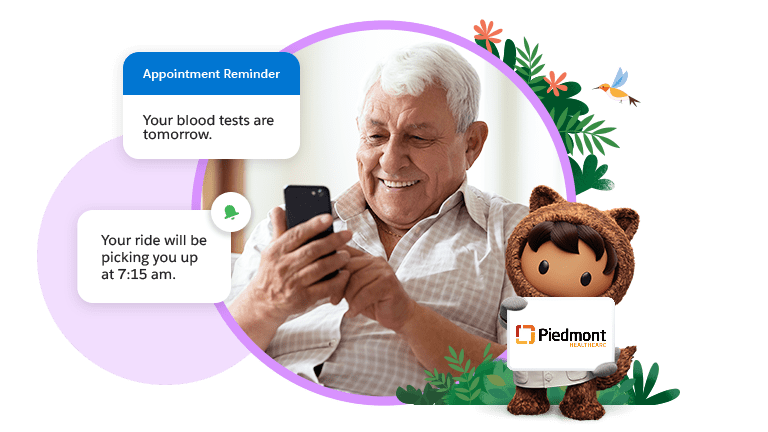How Digitally Enabled Healthcare Can Give Patients the Experiences They Expect

Organizations that personalize services in response to an individual’s medical and nonmedical health factors are met with increased consumer trust. For example, Salesforce’s research found that compared to providers with lower consumer trust, trusted providers are twice as likely to ask patients about nonmedical needs impacting health. This indicates that to continue building trust, it’s important for health organizations to gain a holistic understanding of the consumers they serve.
To keep up, providers recognize that the future of healthcare centers on putting data to efficient use. It starts with the right digital tools and healthcare technology to meet growing patient expectations for instant access and great experiences. This guide will show you how a customer relationship management (CRM) platform is central to success.
Discover why the following strategies are important, and how CRM platforms can help you achieve them:

Chapter 1: Help care providers turn information into action
Healthcare professionals still depend on disparate systems including electronic health records (EHRs), lab systems, and imaging applications. They often toggle between screens searching for the right information, which slows them down and lowers their productivity — taking valuable time away from their patients.
This friction trickles down to the patient, too. While they might prefer to take care of their healthcare tasks in one place, they instead have a more difficult, disconnected experience.
That’s why providers need healthcare technology that puts all relevant data — from EHRs and all other systems — in one secure, easily accessible place.
An integrated CRM platform consolidates clinical and nonclinical patient information into a single console. It doesn’t replace EHRs or other systems. Rather, it gathers information from those systems so care clinicians can see everything easily. The console brings together data across a range of sources, including hospitals, pharmacies, laboratories, vaccination testing sites, billing, and marketing. This is done through HL7 and FHIR standards-based application programming interfaces (APIs).
A rich, contextual view can give providers access to information like:
- Conditions and medications
- Vaccination records
- Appointment history
- Wearable device data
- Communication preferences
- Social determinants of health, such as employment, finances, housing, and transportation.
Creating a single view can improve service, collaboration, and operational efficiencies. For example, as patients become eligible for vaccines or boosters, the system automatically sends them information on how they can schedule appointments.
Manage vaccination administration in your community
In addition, a unified view into your data can unlock predictive analytics to help clinicians provide more personalized care, like identifying at-risk patients for disease or other potential risks and outcomes.
And as needs arise, you can build on top of the platform with new capabilities. Consider the story of Bon Secours Mercy Health, one of the largest health systems in the U.S. They experienced a surge in inquiries at the start of the pandemic as patients needed help assessing symptoms and determining medical care. To serve as many patients as possible, Bon Secours launched a virtual triage chatbot in less than six days and saw an immediate impact: calls to their COVID-19 hotline decreased 80%.

The Salesforce Advantage

Report
The Customer Experience in Healthcare: New Journeys Ahead

Guide
Scale Care Anywhere with Complete Digital Engagement Solutions

Guide
Personalized Healthcare: Moments That Matter
More resources

Technology Playbook for Providers

How to Improve the Experience With Unified Data






